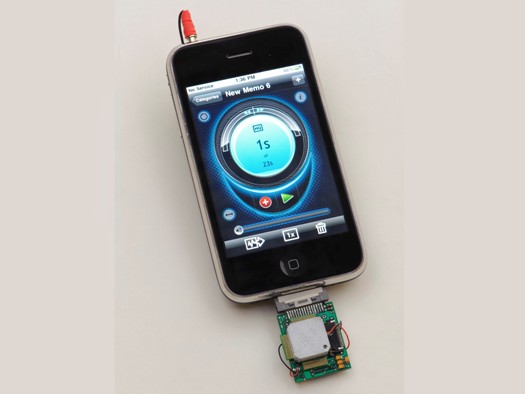NASA Scientist Unveils New Chemical Detection Technology
NASA scientists are creating technology that can detect hazardous chemical compounds in the air with a smart phone.
Jing Li, a physical scientist at NASA's Ames Research Center, Moffett Field, Calif., demonstrated this innovative technology called Cell-All in a training exercise on Sept. 28, 2011, at the Los Angeles Fire Department, Los Angeles.

The device Li developed is about the size of a postage stamp and is designed to be plugged in to an iPhone to collect, process and transmit sensor data. The new device is able to detect and identify low concentrations of airborne ammonia, chlorine gas and methane. The device senses chemicals in the air using a "sample jet" and a multiple-channel silicon-based sensing chip, which consists of 16 nanosensors, and sends detection data to another phone or a computer via telephone communication network or Wi-Fi.
The technology was used to detect carbon monoxide in a response and rescue training exercise for Los Angeles fire and police departments. The U.S. Department of Homeland Security's Science and Technology (S&T) Directorate, in partnership with the Los Angeles Fire Department, Los Angeles Police Department and the California Environmental Protection Agency, sponsored the training exercise.
"This new technology can enhance both personal and public safety by utilizing a common device, such as a cell phone, to detect hazardous chemicals," said Stephen Dennis, technical director of S&T’s Homeland Security Advanced Research Projects Agency. "Our goal is to create a lightweight, cost-effective, power-efficient resource for widespread public use."
The Cell-All technology, consisting of an energy-efficient sensor and cell phone application, detects toxic chemicals and alerts individuals and public safety authorities. Users have the option of using the sensor in a personal mode, which provides personal alerts, or opting-in to a network service, providing anonymous reports of the environmental condition to local responder networks.
Two different prototypes of Cell-All were demonstrated: one developed by NASA’s Center for Nanotechnology at Ames and a prototype developed in partnership between Qualcomm Inc., San Diego, Calif. and Synkera Technologies Inc., Longmont, Colo.